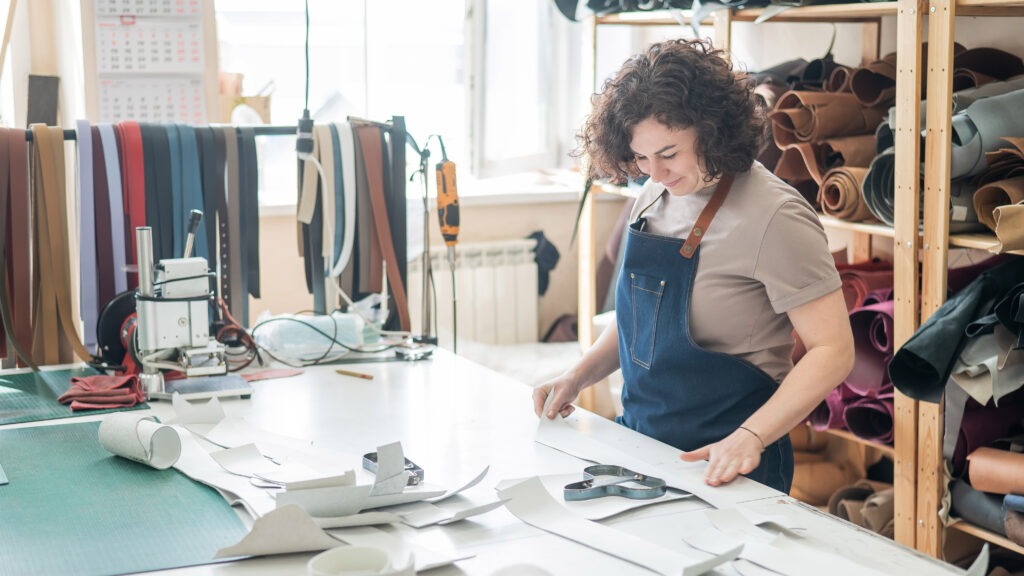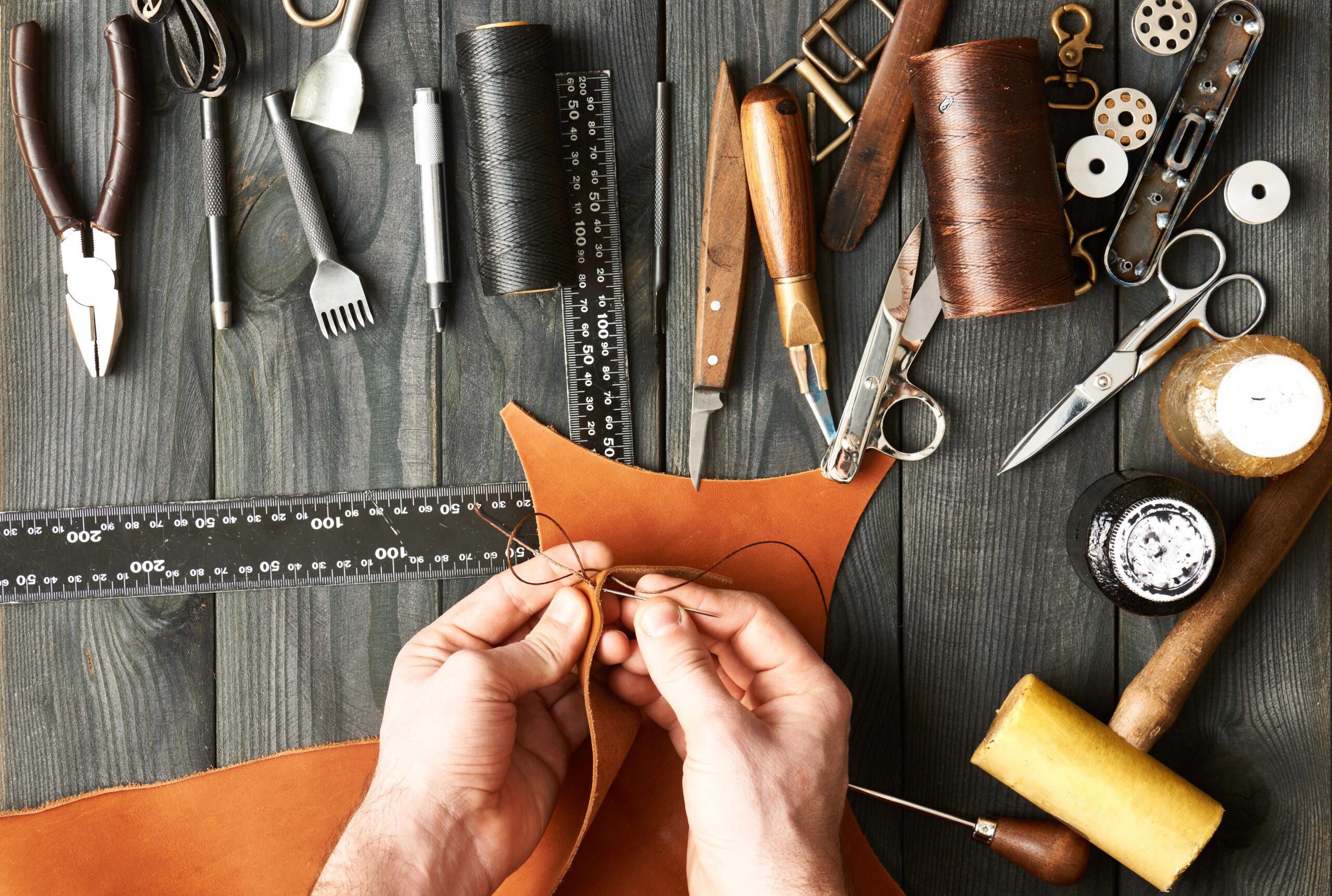Leatherwork
NEO-FUGU®: tailor-made ERP for leather goods manufacturers
NEO-FUGU® meets the specific needs of leather goods manufacturers, taking into account the high demands of this sector of excellence. From the management of top-of-the-range raw materials, such as leather, to the monitoring of all stages of artisanal and industrial production, our ERP guarantees optimum traceability. NEO-FUGU® supports craftsmen and leather goods brands in modernising their processes while respecting their unique know-how.
The leatherworker is an exceptional craftsman who shapes leather and other soft materials to create unique pieces such as bags, belts, wallets… This profession combines tradition and modernity, requiring know-how and limitless creativity.
From designing the model to finishing the object, the leatherworker masters the entire manufacturing process. He carefully selects the leathers, cuts them with precision, assembles them with care and embellishes them with meticulous finishes.
His passion, patience and attention to detail are the keys to his profession. Customers look to him for unique, personalised, high-quality and aesthetically pleasing products, responding to a growing demand for arts and crafts and French know-how.

From materials to precious accessories...
1. Manufacture
It all starts with an idea, a sketch or a digital model (e.g. CAD). The leatherworker designs the object by defining its shape, its dimensions, the materials to be used and the finishes to be applied to a particular type of piece.
He then creates a pattern or detailed plan to guide the production process.
2. Cutting
The pattern is then transferred to the chosen leather.
Using a cutter or a cutting machine, the craftsman will carefully cut out the various parts that will make up the object in question.
This stage requires infinite attention to detail to ensure that the pieces fit perfectly.
3. Preparation of the pieces
The cut pieces of leather must then be ‘prepared’ by the leather craftsman. It can include several operations, such as sanding the edges, smoothing the surfaces, or applying specific products to nourish and protect the leather.
The leatherworker takes care to shape the leather according to the final use of the object, adapting the treatments accordingly.
4. Assembly
Assembly is carried out using various techniques like :
- Sewing : the saddle stitch (widely used) ensures solidity and good looks.
- Gluing : some parts are glued to reinforce joints or fix linings.
- Riveting : metal rivets are sometimes used to assemble parts or fix decorative elements.
5. Finishing and quality control
This is the final touch that gives the object its unique character. Finishing touches can generally include waxing to nourish the leather and give it a beautiful shine, polishing, to obtain a smooth, shiny surface,and personalisation, when the leatherworker adds initials, motifs or decorative elements.

